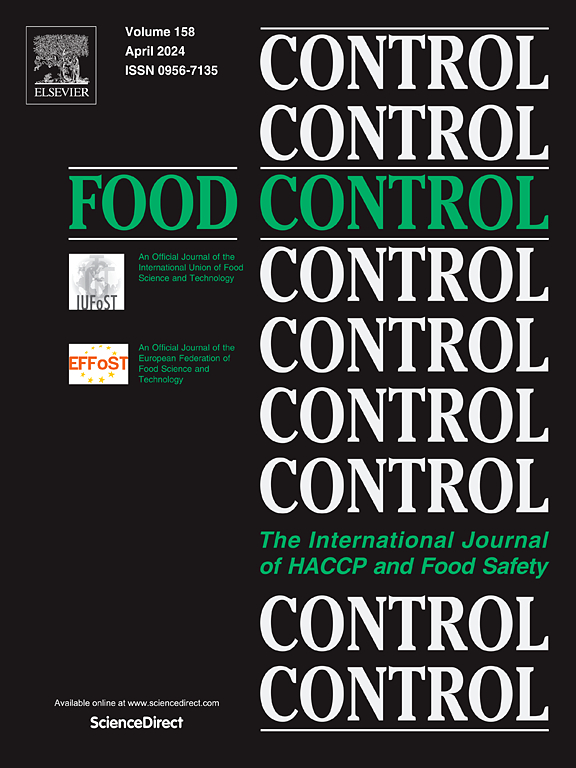Occurrence and health risk assessment of β-lactam antibiotic residues in chicken meat from Kiambu County, Kenya
IF 5.6
1区 农林科学
Q1 FOOD SCIENCE & TECHNOLOGY
引用次数: 0
Abstract
Antibiotic pharmaceuticals are used to treat bacterial diseases in both humans and livestock. In poultry farming, they are used not only to treat and prevent diseases but also to promote growth. However, their overuse increases antibiotic resistance, posing significant global concerns for both humans and the environment. In Kenya, humans' exposure levels to antibiotic residues from consuming animal products has been scarcely explored. This study determined the occurrence of penicillins and cephalosporins in chicken meat and evaluated the associated human health risks. A total of 100 chicken meat samples were collected from chicken farmers and vendors in Kiambu County, including 56 broilers, 24 ex-layers, and 18 indigenous samples. The samples were prepared for antibiotic analysis using the Quick-Easy-Cheap-Effective-Rugged-Safe (QuEChERS) method and quantified by Ultra-Performance Liquid Chromatography-Mass Spectrometry. Recoveries ranged from ‘72.5–98.9 %’. Among the penicillins, ampicillin residues were the most predominant, particularly, in broiler breast tissues, with concentrations of up to 263.76 μg kg−1. Ampicillin also showed the highest frequency of residues above the recommended maximum residue limits. Detected cephalosporins were below 100 μg kg−1 and showed their highest residue concentrations in broiler tissue samples. Calculated daily intake (CDI) and the hazard quotients (HQ) were used to assess human health risks. The CDI of ampicillin in broilers' breast muscles exceeded the Acceptable Daily Intake (ADI) and posed a medium risk (1 < HQ < 5) to adults. Meanwhile, the levels of ampicillin in both the thigh and breast muscles of broilers and ex-layer breast muscles exceeded the ADI for children indicating medium (1< HQ < 5) to high health risk (HQ > 5) to the youngsters. The study underscores the need for the continuous monitoring of antibiotics in chicken meat and addresses significant knowledge gaps on exposure levels and risks. This is valuable for policymaking to ensure food safety.
求助全文
约1分钟内获得全文
求助全文
来源期刊

Food Control
工程技术-食品科技
CiteScore
12.20
自引率
6.70%
发文量
758
审稿时长
33 days
期刊介绍:
Food Control is an international journal that provides essential information for those involved in food safety and process control.
Food Control covers the below areas that relate to food process control or to food safety of human foods:
• Microbial food safety and antimicrobial systems
• Mycotoxins
• Hazard analysis, HACCP and food safety objectives
• Risk assessment, including microbial and chemical hazards
• Quality assurance
• Good manufacturing practices
• Food process systems design and control
• Food Packaging technology and materials in contact with foods
• Rapid methods of analysis and detection, including sensor technology
• Codes of practice, legislation and international harmonization
• Consumer issues
• Education, training and research needs.
The scope of Food Control is comprehensive and includes original research papers, authoritative reviews, short communications, comment articles that report on new developments in food control, and position papers.
 求助内容:
求助内容: 应助结果提醒方式:
应助结果提醒方式:


